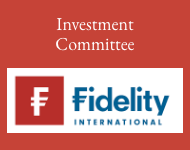David Thornton, Fund Manager, Premier Miton multi-asset, multi-manager team, looks to make sense of how the Trump administration is affecting markets and looks at the reasons why a spread of assets is now more important than ever.
There have been many hours spent in intellectual debate, and thousands of digital trees felled in writing, and speculating, about the outcomes of the actions taken by the Trump administration on Liberation Day as well as the various rollbacks since. Most of it out of date by the time it hits print. Uncertainty abounds. I will try to stick here to a few points on which, in my view, we can be a little more certain. Perhaps.
i). Risk of recession has increased
ii). Variability of inflation outcomes has increased
iii). Bond markets matter
The question for us as multi-asset investors is how to rationalise all that has passed in the last month and make high value investment decisions for long-term investors.
Firstly, in my view, whilst entertaining, there is little to be gained by trying to second guess the actions of the Trump administration, and even less value in trying to predict market outcomes based on those speculations. I mean, everybody knows that US tariffs mean a stronger dollar, right?
The oft-touted adage that markets hate uncertainty is true. And whatever your views of the current administration, Trump will be around for a while and that means uncertainty and unpredictability.
With headlines swamped by the tariff turbulence, it might be easy to forget Germany’s recent announcement of €1 trillion planned spend on defence and infrastructure. Investors have been given reason to divert, even just a small amount, away from US equities. Recent evidence from European ETF flow data show this is already happening. It won’t take much of a shift in allocations to have a big effect. Buy the dip investors might stem this tide for a while but are unlikely to outweigh any institutional outflows from changes to asset allocation meaning a shift away from US equity. The case is strong for putting some of your regional equity eggs in other baskets.
The so-called ‘Trump put’ seemed to be absent, or at least the government were willing to see more equity market turbulence than many had expected. The administration did appear to blink, however, when Treasury yields started rising. Bond markets matter.
An increased long-term cost of financing wasn’t part of the plan but remains a risk for investors as a weaker dollar, compounded by fiscal deficits and inflation uncertainty, could see further selling of longer dated bonds, driving further currency weakness.
That said, a case remains for holding some government bonds as part of a diversified portfolio given the growth uncertainty. I will add one important caveat here though: greater inflation uncertainty can mean a higher level of correlation between equity and bond markets. Given the questions around the future path of inflation, it may be better to keep duration shorter.
The current outlook gives further good reason to own a range of alternatives in a balanced portfolio.
Those that have held gold in their portfolios for the last three years, and perhaps more importantly the last three months, will have enjoyed some smoothing of returns during the recent volatility and, likely, less drawdown.
Cash, now it actually yields something greater than zero, has proved its worth too but beware the inflation genie stays in the bottle.
Although equity dispersion can fall sharply during periods of market fear, both long/short equity and long/short credit funds should be well positioned to take advantage as a little more discernment gradually returns to individual company valuations.
Not all areas of alternative investments have performed well recently though. CTA/Trend funds have generally struggled given the sharp about turn in markets. They have proved useful in previous downturns however, where a more settled pattern of trading has been established.
I’m a little more sceptical around the ability for private equity and dare I say digital currencies, to truly bring diversification benefits to a portfolio. The lesson here is to maintain diversification in your diversification.
For the long-term multi-asset investor, there is plenty of opportunity on offer across the globe and across a number of asset classes especially if you believe that perhaps the US isn’t all that exceptional after all.





































